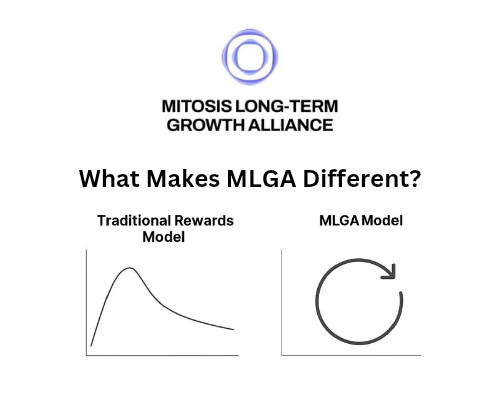Stablecoin Startups Surpass 2021 Venture Capital Peak as Institutional Money Floods In

The stablecoin sector is experiencing a significant resurgence in 2025, with venture capital (VC) investments surpassing the previous high set in 2021. Driven by regulatory clarity, increased institutional adoption, and successful high-profile IPOs, stablecoin startups are attracting unprecedented levels of capital. This marks a pivotal moment for the broader cryptocurrency and digital finance industry.
A Record Year for Stablecoin Funding
In 2025, stablecoin startups have drawn institutional investment at historic levels. The third and fourth quarters of 2024 alone saw 43 and 42 VC deals, respectively, in the stablecoin and payments category—setting new all-time highs. The momentum has continued into 2025, with the week of June 22–28 seeing $739.5 million raised across 17 crypto projects, many focused on stablecoin infrastructure and institutional-grade blockchain solutions.
This surge reflects growing confidence in stablecoins—cryptocurrencies pegged to assets like the U.S. dollar or euro—as tools for cross-border payments, trade finance, and corporate treasury management. Unlike volatile digital assets such as Bitcoin, stablecoins offer price stability, making them more practical for real-world financial use cases.
Catalysts Behind the Boom
Regulatory Clarity Attracts Institutional Interest
A key driver of the current investment wave is regulatory progress in the U.S. The passage of the Guiding and Establishing National Innovation for US Stablecoins (GENIUS) Act in June 2025 has created a clearer legal framework. The law mandates stablecoins be backed by liquid assets, such as U.S. dollars or short-term Treasury bills, and requires monthly reserve disclosures.
Complementing this, the STABLE Act in the House introduces differing oversight mechanisms but shares the aim of legitimizing stablecoins as secure financial instruments. Together, these developments have reduced regulatory uncertainty and encouraged traditional VC and institutional players to enter the market.
Circle’s IPO Validates the Market
The IPO of Circle, the issuer of USD Coin (USDC), has been a major catalyst. Launched on June 5, 2025, the offering was oversubscribed by over 25 times, with shares surging 168% on debut and peaking at $263.45 by June 23. Circle’s valuation now exceeds $8 billion on a fully diluted basis.
This IPO success has reassured investors of the commercial viability of stablecoin infrastructure. It has also inspired other firms—such as Gemini and Kraken—to consider going public, reinforcing the sector’s growing integration with traditional financial markets.
Rising Institutional Adoption
Major financial institutions and Fortune 500 companies are increasingly embracing stablecoins. Visa and Mastercard are integrating stablecoins into their payment systems, while JPMorgan’s blockchain unit, Kinexys, has introduced the JPMD token to enable 24/7 institutional settlement.
Traditional banks like Bank of America and Societe Generale are exploring stablecoin issuance, and even retail giants like Walmart are considering branded tokens. A Coinbase report notes that interest in stablecoins among Fortune 500 firms has risen from 8% in 2024 to 29% in 2025.
Stablecoins are also making their way into corporate treasuries. Green Minerals AS, for example, has allocated $1.2 billion to Bitcoin reserves while evaluating stablecoin strategies to streamline global transactions.
Market Expansion and New Entrants
As of June 2025, global stablecoin market capitalization stands at a record $251.7 billion—up 22% since the beginning of the year. Tether (USDT) and Circle’s USDC dominate the market, with $73 billion and $41 billion in circulation, respectively.
However, new entrants are making waves. Ethena Labs, for instance, has introduced the yield-bearing USDe stablecoin, attracting nearly $6 billion in assets. Ethereum-based stablecoins now account for over $134 billion of the market, adding around 750,000 new users per week—fueled by both retail and institutional demand.
Key Players and Innovations
Several notable players are leading the next phase of stablecoin innovation:
- Stably: A Seattle-based provider of Stablecoin-as-a-Service (SCaaS), helping financial institutions launch branded stablecoins. Clients include Ripple and Stellar.
- Ethena Labs: Backed by Galaxy Digital’s $175 million venture fund, Ethena offers the USDe stablecoin, which combines price stability with passive yield.
- Canton Network: A public Layer-1 blockchain focused on institutional finance, Canton raised $135 million to support interoperable applications.
- Ubyx: A stablecoin clearing platform that recently raised $10 million in seed funding. It focuses on seamless face-value redemptions and increasing accessibility.
Challenges and Risks
Despite the optimistic outlook, the stablecoin sector is not without challenges:
- Regulatory Gaps: While the GENIUS Act provides a foundation, critics argue it lacks sufficient anti-money laundering (AML) protections and doesn’t address potential conflicts of interest—such as those arising from politically affiliated stablecoins like USD1.
- Market Concentration: With Tether and Circle accounting for 95% of market capitalization, there are concerns about transparency, competition, and systemic risks if either falters.
- Speculation and Bubble Risks: Analysts caution that speculative inflows driven by yield-seeking rather than utility could inflate a bubble, detaching stablecoin valuations from real-world use cases.
Outlook
The stablecoin market is on track for continued growth, with forecasts suggesting market capitalization could reach the trillions in the coming years. Innovations like yield-generating tokens, institutional interoperability, and blockchain integration are reshaping how money moves across borders and systems.
Institutions like BlackRock and Standard Chartered are already using stablecoins for collateral and settlement, further blurring the lines between crypto and traditional finance.
For startups, the surge in venture capital represents a golden opportunity—but long-term success will depend on navigating regulatory complexity, fostering trust, and delivering scalable, transparent solutions.
References














Comments ()